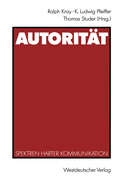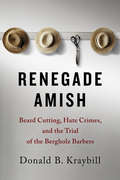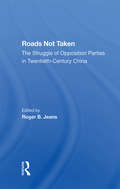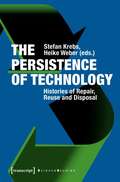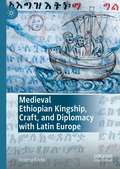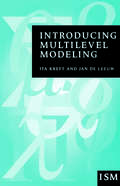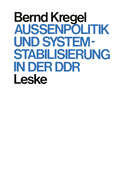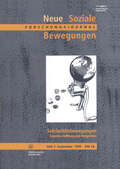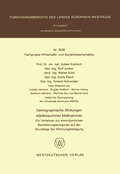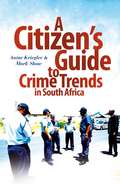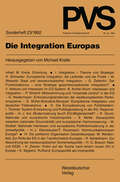- Table View
- List View
Born Fighter
by Reg KrayReg Kray is one of Britain's most notorious criminals. Together with his brother Ron, he rose through the ranks of London's East End gangland to run an evil empire of vice and villainy. But, after half a lifetime behind bars, Reg wants to set the record straight. Here, in his own words, is the true story of his life as one half of a criminal double act with his brother Ron, the chilling career of two street-wise kids who became standard-bearers of violence - from fire-bombings to shootings and cold-blooded murder. But here too is the inner voice of a one-time mobster who learned compassion through his own struggle to come to terms with a life sentence.
Renegade Amish: Beard Cutting, Hate Crimes, and the Trial of the Bergholz Barbers
by Donald B. KraybillOn the night of September 6, 2011, terror called at the Amish home of the Millers. Answering a late-night knock from what appeared to be an Amish neighbor, Mrs. Miller opened the door to her five estranged adult sons, a daughter, and their spouses. It wasn’t a friendly visit. Within moments, the men, wearing headlamps, had pulled their frightened father out of bed, pinned him into a chair, and—ignoring his tearful protests—sheared his hair and beard, leaving him razor-burned and dripping with blood. The women then turned on Mrs. Miller, yanking her prayer cap from her head and shredding it before cutting off her waist-long hair. About twenty minutes later, the attackers fled into the darkness, taking their parents’ hair as a trophy. Four similar beard-cutting attacks followed, disfiguring nine victims and generating a tsunami of media coverage. While pundits and late-night talk shows made light of the attacks and poked fun at the Amish way of life, FBI investigators gathered evidence about troubling activities in a maverick Amish community near Bergholz, Ohio—and the volatile behavior of its leader, Bishop Samuel Mullet.Ten men and six women from the Bergholz community were arrested and found guilty a year later of 87 felony charges involving conspiracy, lying, and obstructing justice. In a precedent-setting decision, all of the defendants, including Bishop Mullet and his two ministers, were convicted of federal hate crimes. It was the first time since the 2009 passage of the Matthew Shepard and James Byrd, Jr., Hate Crimes Prevention Act that assailants had been found guilty for religiously motivated hate crimes within the same faith community.Renegade Amish goes behind the scenes to tell the full story of the Bergholz barbers: the attacks, the investigation, the trial, and the aftermath. In a riveting narrative reminiscent of a true crime classic, scholar Donald B. Kraybill weaves a dark and troubling story in which a series of violent Amish-on-Amish attacks shattered the peace of these traditionally nonviolent people, compelling some of them to install locks on their doors and arm themselves with pepper spray.The country’s foremost authority on Amish society, Kraybill spent six months assisting federal prosecutors with the case against the Bergholz defendants and served as an expert witness during the trial. Informed by trial transcripts and his interviews of ex-Bergholz Amish, relatives of Bishop Mullet, victims of the attacks, Amish leaders, and the jury foreman, Renegade Amish delves into the factors that transformed the Bergholz Amish from a typical Amish community into one embracing revenge and retaliation. Kraybill gives voice to the terror and pain experienced by the victims, along with the deep shame that accompanied their disfigurement—a factor that figured prominently in the decision to apply the federal hate crime law. Built on Kraybill’s deep knowledge of Amish life and his contacts within many Amish communities, Renegade Amish highlights one of the strangest and most publicized sagas in contemporary Amish history.
Survival of the Virtuous: The Evolution of Moral Psychology
by Dennis L. KrebsDo good guys finish last? Did we evolve to look out for number one? Are we bad by nature? At first glance, the theory of evolution seems to imply that all organisms are evolved to be selfish. In this book, evolutionary psychologist Dennis Krebs explains how virtuous behaviors such as altruism, justice, honesty, loyalty, self-control, purity, and respect for authority, have evolved in humans and other species. He argues that the key to solving puzzles of morality--such as what it is, how we acquire moral traits, why we sometimes behave badly, and how we make moral decisions--lies in figuring out what adaptive functions moral traits served in early human environments and how they are influenced by social learning, culture, and strategic social interactions in the modern world. Arguing that the primary function of virtuous behaviors is to enable individuals to advance their own interests and examining the moral decision-making mechanisms that evolved to serve these functions, this book considers the "new brain" mechanisms that are unique to humans and "old brain" mechanisms that we share with other species, illuminating how these work in conjunction with each other to guide our moral choices. Survival of the Virtuous is accessibly written for academic and scholarly readers interested in understanding how moral traits evolved in the human species.
Survival of the Virtuous: The Evolution of Moral Psychology
by Dennis L. KrebsDo good guys finish last? Did we evolve to look out for number one? Are we bad by nature? At first glance, the theory of evolution seems to imply that all organisms are evolved to be selfish. In this book, evolutionary psychologist Dennis Krebs explains how virtuous behaviors such as altruism, justice, honesty, loyalty, self-control, purity, and respect for authority, have evolved in humans and other species. He argues that the key to solving puzzles of morality--such as what it is, how we acquire moral traits, why we sometimes behave badly, and how we make moral decisions--lies in figuring out what adaptive functions moral traits served in early human environments and how they are influenced by social learning, culture, and strategic social interactions in the modern world. Arguing that the primary function of virtuous behaviors is to enable individuals to advance their own interests and examining the moral decision-making mechanisms that evolved to serve these functions, this book considers the "new brain" mechanisms that are unique to humans and "old brain" mechanisms that we share with other species, illuminating how these work in conjunction with each other to guide our moral choices. Survival of the Virtuous is accessibly written for academic and scholarly readers interested in understanding how moral traits evolved in the human species.
Roads Not Taken: The Struggle Of Opposition Parties In Twentieth-century China
by Edward S Krebs Roger Jeans Parks Coble Marilyn M. LevineStudies of the political history of twentieth-century China traditionally have been skewed toward a two-dimensional view of the major combatants: the Chinese Communist Party and the Guomindang. Although their struggle undeniably has been the main story, it is neither the only nor the complete story. During the Republican period (1912-1949), many ed
Roads Not Taken: The Struggle Of Opposition Parties In Twentieth-century China
by Edward S Krebs Roger Jeans Parks Coble Marilyn M. LevineStudies of the political history of twentieth-century China traditionally have been skewed toward a two-dimensional view of the major combatants: the Chinese Communist Party and the Guomindang. Although their struggle undeniably has been the main story, it is neither the only nor the complete story. During the Republican period (1912-1949), many ed
Das Individuum der Sozialen Arbeit: Ein Beitrag zur Soziologie der Sozialen Arbeit
by Marcel KrebsDie Evolution von Gesellschaft führt zu unterschiedlichen Differenzierungsformen, die immer auch als Neu-Arrangierung des Verhältnisses gelesen werden kann, welches die Gesellschaft zum Individuum einrichtet. Diese These wird im vorliegenden Buch mittels zweier Studien entlang der Werke von Émile Durkheim und Niklas Luhmann ausführlich ausgearbeitet. Beiden theoretischen Zugängen ist gemein, dass sie die Individualität des «modernen» Individuums nicht als Kompositum der Gesellschaft begreifen, vielmehr hat das Individuum seinen Standort in sich selbst und somit ausserhalb der Gesellschaft. Trotz dieser extrasozietalen Verortung bleibt Individualität gesellschaftlich verursacht, Individuen sind für die Ermöglichung und den Erhalt ihrer Individualität konstitutiv auf soziale Systeme und Inklusion angewiesen.Die Soziale Arbeit findet ihr gesellschaftliches Bezugsproblem in diesem Sachverhalt, indem sie Individualität als Kehrseite partieller Multiinklusion reflektiert und als bearbeitbare Grösse betrachtet. Ihr geht es – zumindest dann, wenn sie mehr will als nur das biologische Überleben der «Überflüssigen» zu verwalten – um das Arrangement der Inklusionen und hier um die Frage, wie Individualität auf eine gerechte Weise ermöglicht, entwickelt und stabilisiert werden kann.
Kulturen des Reparierens: Dinge - Wissen - Praktiken (Edition Kulturwissenschaft #133)
by Stefan Krebs Gabriele Schabacher Heike WeberReparieren und Instandhalten sind ökonomisch wie kulturell zentrale Praktiken im »Leben« technischer Dinge und Infrastrukturen. Der Band rückt diese bislang wenig untersuchten Tätigkeiten in den Vordergrund und fragt nach den Wissensformen der unterschiedlichen Kulturen des Reparierens. Die Expertisen und politischen Ambitionen menschlicher Akteure finden dabei ebenso Berücksichtigung wie die Eigendynamik der Dinge. Die Beiträge untersuchen Praktiken wie die Uhr- oder Computerreparatur sowie Räume wie die Wohnung und das Krankenhaus, das Repair Café und die Stadt des Globalen Südens. Nicht zuletzt geht es um die Frage, inwiefern Reparieren und reparaturfreundliches Design zu mehr Nachhaltigkeit beitragen können.
The Persistence of Technology: Histories of Repair, Reuse and Disposal (Science Studies)
by Stefan Krebs Heike WeberRepair, reuse and disposal are closely interlinked phenomena related to the service lives and persistence of technologies. When technical artefacts become old and worn out, decisions have to be taken: is it necessary, worthwhile or even possible to maintain and repair, reuse or dismantle them - or must they be discarded? These decisions depend on factors such as the availability of second-hand markets, repair infrastructures and dismantling or disposal facilities. In telling the stories of China's power grid, Canadian telephones, German automobiles and India's shipbreaking business, among others, the contributions in this volume highlight the persistence of technologies and show that maintenance and repair are not obsolete in modern industries and consumer societies.
Medieval Ethiopian Kingship, Craft, and Diplomacy with Latin Europe
by Verena KrebsThis book explores why Ethiopian kings pursued long-distance diplomatic contacts with Latin Europe in the late Middle Ages. It traces the history of more than a dozen embassies dispatched to the Latin West by the kings of Solomonic Ethiopia, a powerful Christian kingdom in the medieval Horn of Africa. Drawing on sources from Europe, Ethiopia, and Egypt, it examines the Ethiopian kings’ motivations for sending out their missions in the fifteenth and early sixteenth centuries – and argues that a desire to acquire religious treasures and foreign artisans drove this early intercontinental diplomacy. Moreover, the Ethiopian initiation of contacts with the distant Christian sphere of Latin Europe appears to have been intimately connected to a local political agenda of building monumental ecclesiastical architecture in the North-East African highlands, and asserted the Ethiopian rulers’ claim of universal kingship and rightful descent from the biblical king Solomon. Shedding new light on the self-identity of a late medieval African dynasty at the height of its power, this book challenges conventional narratives of African-European encounters on the eve of the so-called ‘Age of Exploration'.
Soziologische Erkenntnis und Geschichte: Über Möglichkeit und Grenzen einer empirisch-analytischen Orientierung in den Humanwissenschaften
by Reinhard KreckelIntroducing Multilevel Modeling
by Ita G Kreft Jan De LeeuwThis is the first accessible and practical guide to using multilevel models in social research. Multilevel approaches are becoming increasingly important in social, behavioural, and educational research and it is clear from recent developments that such models are seen as being more realistic, and potentially more revealing, than ordinary regression models. While other books describe these multilevel models in considerable detail none focuses on the practical issues and potential problems of doing multilevel analyses that are covered in Introducing Multilevel Modeling. The authors' approach is user-oriented and the formal mathematics and statistics are kept to a minimum. Other key features include the use of worked examples using real data sets, analyzed using the leading computer package for multilevel modeling - MLn. Discussion site at: http:\\www.stat.ucla.edu\phplib\w-agora\w-agora.phtml?bn=Sagebook Data files mentioned in the book are available from: http:\\www.stat.ucla.edu\~deleeuw\sagebook
Solidaritätsbewegungen: Zwischen Hoffnung und Resignation
by Rolf Kreibich Reinhart Kößler Rolf Bräuer Malte Letz Michael Bommes Michael Heuer Michael Windfuhr Ingrid Spiller Albert Scherr Christoph Butterwegge Hans G. JansenDemographische Wirkungen städtebaulicher Maßnahmen: Ein Verfahren zur kleinräumlichen Bevölkerungsprognose auf der Grundlage der Wohnungsbelegung (Forschungsberichte des Landes Nordrhein-Westfalen #3028)
by Volker KreibichOrdnungen des Todes: Von Listen, Statistiken und Dunkelziffern über das Sterben und die Verstorbenen (Tod und Agency. Interdisziplinäre Studien zum Lebensende #1)
by Nina Kreibig Thomas Macho Moisés PrietoOb Opfer von Genoziden, Attentaten, häuslicher Gewalt, Unfällen oder Naturkatastrophen: Listen sind nie »unschuldig«, sondern verfolgen immer bestimmte Absichten. Register suggerieren Kontrolle, sind aber auch Machtinstrumente. Listen von Verstorbenen dokumentieren gesellschaftliches Handeln und erzählen eine eigene Geschichte des Todes. Die Beiträger*innen untersuchen von der Frühen Neuzeit bis zur Gegenwart Zählungen von Gefallenen oder Verstorbenen in kolonialen Kontexten, Unfallstatistiken, Todeslisten in der NS-Zeit, Suizide in der DDR sowie Todesfälle von Geflüchteten. Ihre Analysen fokussieren dabei die Hintergründe und Motivationen der Urheber*innen und liefern damit einen erhellenden Einblick in die Macht der Statistik.
Minority Voting in the United States [2 volumes]: [2 volumes]
by Kyle L. Kreider Thomas J. BaldinoWhat are the voting behaviors of the various minority groups in the United States and how will they shape the elections of tomorrow? This book explores the history of minority voting blocs and their influence on future American elections.According to current scholarship, the Caucasian population of the United States is expected to be a minority by 2042. As the white majority disappears and politics shift with the changing tide, it is important to understand the voting behaviors of the significant minority voting blocs in the United States. In this book, a variety of voting blocs are examined: African Americans, women, Native Americans, Latinos (Mexicans, Cubans, Puerto Ricans), South Asians (Indians, Pakistanis, Bangladeshis), East Asians (Chinese, Japanese, Koreans), Filipinos, Pacific Islanders, Arab Americans, Muslim Americans, Jewish Americans, and the LGBT community. In addition to factual and historical information about the minority voting blocs, chapters also explore how Section 5 of the Voting Rights Act of 1965, felon disenfranchisement laws, and voter ID laws impact a minority group's voting rights. Finally, the authors and contributors anticipate which issues are likely to influence each group's voters and affect future elections.
Minority Voting in the United States [2 volumes]: [2 volumes]
by Kyle L. Kreider Thomas J. BaldinoWhat are the voting behaviors of the various minority groups in the United States and how will they shape the elections of tomorrow? This book explores the history of minority voting blocs and their influence on future American elections.According to current scholarship, the Caucasian population of the United States is expected to be a minority by 2042. As the white majority disappears and politics shift with the changing tide, it is important to understand the voting behaviors of the significant minority voting blocs in the United States. In this book, a variety of voting blocs are examined: African Americans, women, Native Americans, Latinos (Mexicans, Cubans, Puerto Ricans), South Asians (Indians, Pakistanis, Bangladeshis), East Asians (Chinese, Japanese, Koreans), Filipinos, Pacific Islanders, Arab Americans, Muslim Americans, Jewish Americans, and the LGBT community. In addition to factual and historical information about the minority voting blocs, chapters also explore how Section 5 of the Voting Rights Act of 1965, felon disenfranchisement laws, and voter ID laws impact a minority group's voting rights. Finally, the authors and contributors anticipate which issues are likely to influence each group's voters and affect future elections.
A Citizen's Guide to Crime Trends in South Africa
by Anine Kreigler Mark ShawSouth Africans care a lot about crime. We think and worry about it, plan and insure against it, develop and share theories about it, read about it, and talk about it… a lot.But how much do we really know? Crime statistics do not belong to the government, academics, specialists, or the press. They are ours: we experience and report crimes and have a right to access and understand their official record. It should not take any particular expertise to get a grasp on what we should make of the figures and graphs that the South African Police Service produces every year.A Citizen’s Guide to Crime Trends in South Africa provides a basis on which to understand the statistics in a manner that is accessible to everyone. Each chapter challenges a set of oft-repeated assumptions about how bad crime is, where it occurs, and who its victims are. It also demonstrates how and why crime statistics need to be matched with other forms of research, including criminal justice data, in order to produce a fuller account of what we are faced with.
Die Integration Europas (Politische Vierteljahresschrift Sonderhefte)
by Michael KreileMichael Kreile Maastricht und die Grenzen einer Integrationsstrategie Die Verwirklichung des europäischen Binnenmarktes fällt zusammen mit einer Wachs tumskrise der Europäischen Gemeinschaft, deren Dauer und Konsequenzen gegen wärtig noch nicht abzuschätzen sind. Die heftige, ja überhitzte Debatte, die der Prozeß der Ratifizierung des in Maastricht vereinbarten Vertrages über die Europäische Union in einigen Mitgliedsstaaten ausgelöst hat, hat deutlich gemacht, daß die über vier Jahrzehnte verfolgte Integrationsstrategie an Grenzen stößt. Der" permissive Konsens", der bisher die westeuropäische Integration begleitet und getragen hat, bröckelt un versehens ab. Die Akzeptanz von Europapolitik geht zurück (vgl. Reif 1992). Das Versprechen höherer Wachstumsraten und die Logik technokratischer Steuerungsmo delle reichen offenbar nicht mehr aus, um eine Integrationspolitik zu legitimieren, die Bürgernähe nur beschwören, aber nicht erfahrbar machen kann. Statt des "Europas der Bürger" treten die Bürger gegen Europa in Erscheinung. Insofern kündigen wo möglich das dänische wie das französische Maastricht-Referendum europapolitische Konflikte an, die eine Phase der Stagnation des europäischen Einigungsprozesses einleiten oder ein Europa der" variablen Geometrie" begründen könnten. Zweifellos leidet die Maastricht-Debatte nicht nur in Deutschland daran, daß die Schwäche von Regierungen und ein konjunktureller Abwärtstrend zusammentreffen. Die Komplexität der Materie und die "Unlesbarkeit" des Vertrages tragen sicherlich zur Konfusion in der öffentlichen Auseinandersetzung bei. Ähnlich wie Wahlen zum Europäischen Parlament viel eher nationale "Nebenwahlen" sind als Entscheidungen über europapolitische Streitfragen, haben die Stimmbürger bei den Volksabstimmun gen über Maastricht auch für oder gegen ihre Regierung votiert.
Ökonomie der Geschlechterdifferenz: Zur Persistenz von Gender Gaps
by Margareta KreimerDas Buch beinhaltet eine mit empirischen Arbeiten zur österreichischen Situation unterlegte Analyse ökonomisch relevanter Geschlechterdifferenzen sowie deren Veränderungsmöglichkeiten aus einer ökonomisch-feministischen Perspektive. Ausgangspunkt und Problemstellung bilden die Existenz und vor allem die Dauerhaftigkeit der auf vielen Ebenen feststellbaren Gender Gaps und der darin festgehaltene Aspekt der Diskriminierung. Für eine Reihe solcher Differenzen im Arbeitsmarkt (Einkommen, Beschäftigung, Arbeitszeit, Berufskarriere) und für den Gender Gap Care wird gezeigt, wie die asymmetrische Arbeitsteilung zwischen den Geschlechtern (re-)produziert wird, welche Erklärungsansätze die Wirtschaftswissenschaften im mainstream sowie in der erweiterten Perspektive der feminist economics anbieten, und schließlich wie Gleichstellungspolitik Gestaltungsspielräume eröffnen und nutzen kann.
